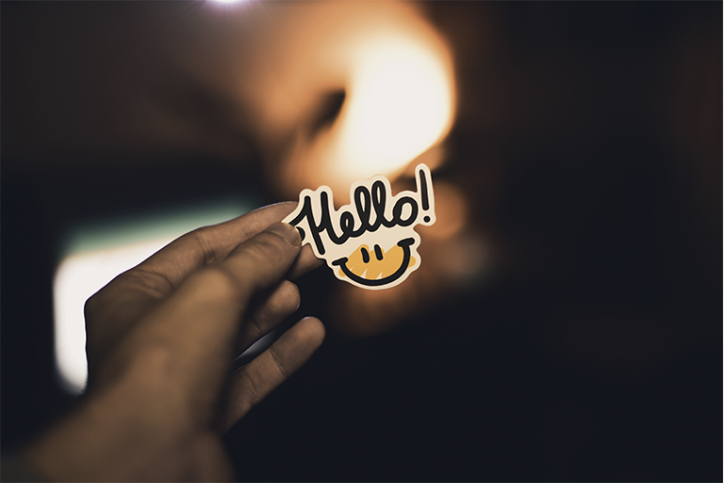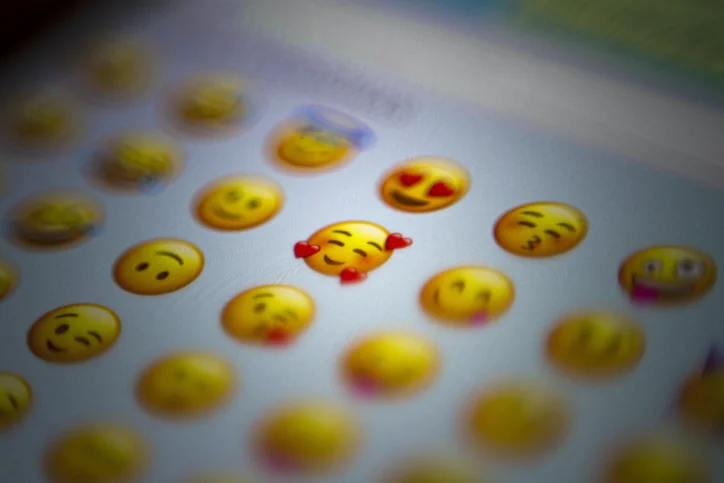🙂 Emojis: Past, Present and Future
In the digital age, emojis are more than just fun — these small, colorful icons have become an indispensable element of daily communication, allowing us to express a myriad of emotions and insert nuance into our online messages.
But where did these quirky pictographs originate? How they have become so ingrained in our lives? And what does the future hold for the now ubiquitous emoji?
Let’s explore.

👀 A Brief History of Emojis
Before emojis, there were emoticons. These text-based faces, created using punctuation marks, became popular during the 1980s and 90s, as a way to convey emotions in otherwise flat, disembodied text. Early digital communicators used combinations like 🙂 and ;-), for example, to express happiness and winking respectively.
However, the first emojis as we know them today originated in Japan during the late 1990s. Artist Shigetaka Kurita, working to incorporate visual and emotional cues into communication through Japan’s first widespread mobile internet platform, designed a set of 176 icons — everything from weather symbols to hand gestures and faces — that expressed concepts and emotions in a simple, fast way suitable for cell phone screens.
Thus the “emoji” (a portmanteau of the Japanese words e, or “picture,” and moji, or “character”) was born.
Due to technical limitations of that time, these early emojis were grayscale and fixed in size on a twelve-by-twelve-pixel grid. However, their popularity spread like wildfire not just throughout Asia, but across the globe.
Emojis were integrated into Unicode, the universal character encoding standard, in 2010. This made them accessible on various digital platforms worldwide. The widespread adoption of emojis began when Apple included an emoji keyboard in its iOS update in 2011, prompting other tech companies like Google and Microsoft to follow suit.
Today, there are almost 3,000 emojis available, and they are used by over 90 percent of the online population every day across various digital platforms to express emotions, ideas, and information.

🌎 Why Emojis Matter
Emojis play a pivotal role in digital messaging, providing a way to convey emotions, tone, and context where these elements can easily be misinterpreted. They can express a wide range of sentiments, from humor to sarcasm, and can make messages more personal and relatable.
Additionally, their visual nature transcends language barriers as they are universally recognized, making communication more inclusive. In essence, emojis enhance our ability to communicate in the digital world.
Studies have shown that emojis make people more likely to view messages positively. They increase perceptions of warmth and empathy. When skillfully used, emojis can soften the tone, indicate humor, and make content more digestible and less formal. They can help to reduce misunderstandings in communication and convey nuances that are often lost in written text.
Furthermore, emojis have proven their worth in the business world. They can increase engagement, as social media posts with emojis garner more likes and shares, marketing emails with emojis have higher click-through rates, and users tend to spend more time on websites that incorporate emojis.
They can also humanize a brand, making it seem more approachable and relatable, and make calls to action more effective by drawing attention and adding an element of fun that can motivate action.
They can be particularly useful in customer service communication, making interactions more friendly and less robotic. Their universality can also be particularly beneficial for global businesses.
Whether it’s spreading a message or selling a product, emojis are a powerful tool to grab the attention of the audience.

👁️ Approving New Emojis
With emojis so prominent, it’s natural that many users want to see their culture or experience represented. But the path to adding a new emoji is long and arduous.
The approval of new emojis is managed by the Unicode Consortium, a non-profit organization dedicated to developing, maintaining, and promoting software internationalization standards. Anyone can propose a new emoji, but they must present a strong case. Additionally, the proposal must follow a specific format and meet certain criteria.
Factors like expected usage level, visual distinctiveness, and range of meanings influence decisions. Fads and brands normally don’t make the cut.
After extensive review by the Unicode Emoji Subcommittee and Technical Committee, the best proposals become candidates, then finalists. Finally, if approved, they are incorporated in the next Unicode release, which smartphone companies and other platforms can then implement across devices and operating systems globally. The multi-step process means it takes about two years for an accepted emoji to reach users’ screens.
🔮 The Future: Emojis Meet A.I.
With advancements in artificial intelligence, we can see emojis becoming more personalized and interactive.
A.I. could potentially analyze a user’s writing style, tone, and context to suggest the most appropriate emoji, enhancing communication efficiency. Moreover, we could witness the development of dynamic emojis that change their expressions based on the interaction or conversation.
There’s also potential for more inclusive emojis, with A.I. able to generate emojis that better represent individuals’ unique characteristics or emotions.
Machine learning techniques could enable the on-demand creation of emojis based on analysis of the user’s facial expressions and gestures, generating a matching emoji in real-time. This could produce billions of personalized emojis as varied as humanity itself.
Such a future also raises issues around data privacy, representation, and unintended impacts of A.I. behavior. As with any new technology, emoji creators and users will need open and informed dialogue around responsible innovation.
For example, if personalized A.I.-enhanced emojis are based on personal data such as facial expressions or emotional states, it raises questions about consent, data storage and usage, and privacy.
Additionally, when an emoji is personalized it raises another question: Who owns the rights? If an A.I. creates an emoji based on your face, do you own that emoji, or does the company that created the A.I.?
There is also the potential for misuse or manipulation. For example, in a world of personalized emojis based on users’ features or characteristics, could emojis then be deepfaked to impersonate real people? If so, it would not only raise privacy concerns but could also be used to spread misinformation or cause harm.
Finally, while emojis are a universal language, not all symbols carry the same meanings in different cultures. As A.I.-enhanced emojis become more sophisticated, the risk of cultural misinterpretations could increase.
These potential ethical, legal, and safety issues underline the need for careful regulation and oversight as A.I. technology continues to evolve. There’s also still plenty of room for improvement when it comes to traditional emojis, as well — particularly for more equitable representation.
Nevertheless, from simple emoticons to A.I.-powered personal emojis, these pictographs have grown into an essential part of human communication by filling in crucial emotional gaps.
What started as a coding compromise to add emotional flavor now drives connection, inclusiveness, and business value — and that seems unlikely to change any time soon.
